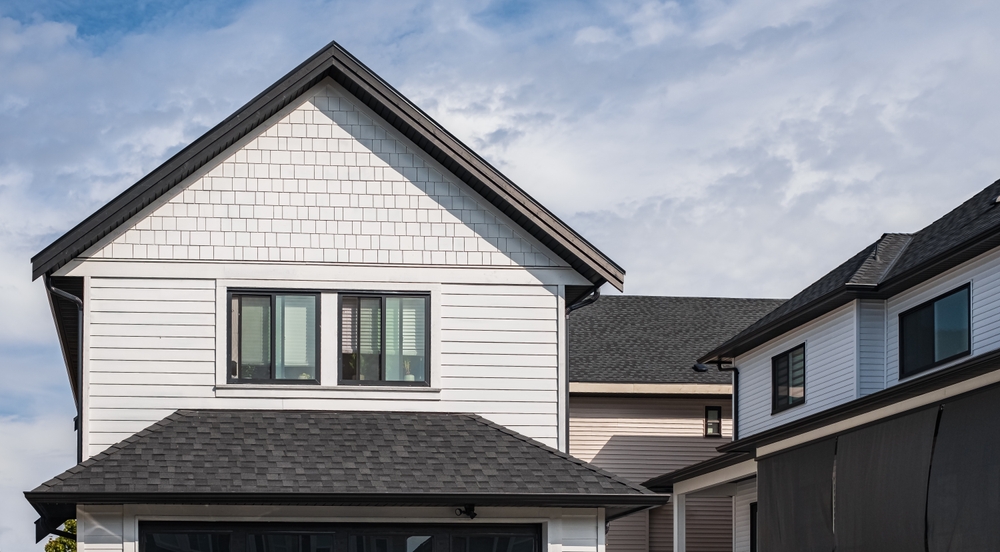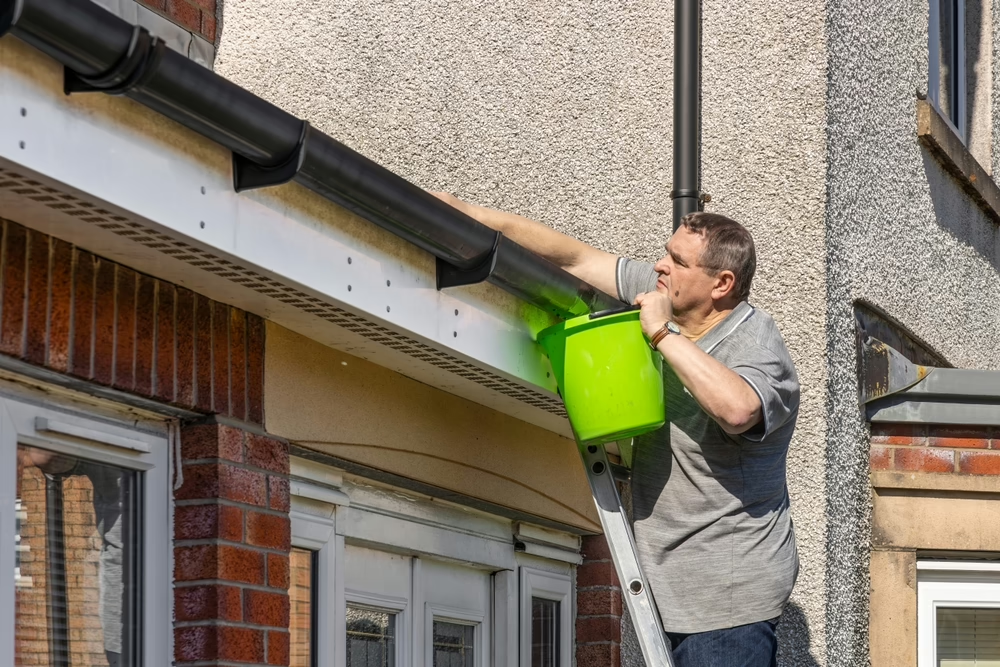As a homeowner, ensuring the integrity of your roof is crucial for maintaining the safety and value of your property. Regular roof inspections can help identify potential issues early, preventing costly repairs down the line. While some aspects of roof maintenance require professional expertise, there are several checks you can perform yourself to assess your roof’s condition. This guide will walk you through a comprehensive DIY roof inspection process, highlighting key areas to examine and offering practical tips to keep your roof in optimal shape.
Performing your own roof inspection also empowers you to be proactive in home maintenance, reducing the risk of unexpected repairs during severe weather. By familiarizing yourself with your roof’s condition, you’re better equipped to schedule professional services at the right time rather than reacting to emergencies. This hands-on approach can also help you better communicate issues to roofing contractors and make more informed decisions about repairs or replacements.
Safety First: Preparing for the Inspection
Before embarking on your roof inspection, it’s important to prioritize safety. Always use a sturdy ladder placed on a flat, stable surface. It’s advisable to have someone nearby to assist in case of emergencies. Wear non-slip footwear and avoid conducting inspections during adverse weather conditions such as rain, snow, or high winds. If you’re uncomfortable with heights or unsure about accessing your roof, consider consulting a professional roofing service like Martin Roofing & Construction, which offers comprehensive roof inspections and maintenance services.
In addition to these precautions, ensure that your ladder is positioned at a safe angle, typically one foot away from the base of the wall for every four feet of height. This angle helps maintain stability while climbing. When on the roof, avoid stepping on fragile areas like skylights or vents, as they can be slippery or weak. If your roof has steep pitches or complex features, it’s best to hire a professional to avoid potential accidents.
Safety should also extend to the tools and gear you bring. Always use a tool belt to keep your hands free, and avoid carrying heavy equipment up the ladder. Consider using binoculars or a drone to inspect hard-to-reach areas from the ground. This not only increases your safety but also allows you to spot issues without causing unintentional damage to the roof surface.
Inspecting Roof Shingles and Materials
Begin your inspection by examining the shingles and roofing materials. Look for signs of damage such as missing or broken shingles, curling or buckling, and excessive granule loss. Missing or broken shingles expose the underlying roof deck to the elements, increasing the risk of leaks. Curling or buckling shingles may indicate issues with attic ventilation or aging materials. Excessive granule loss, often found in gutters, suggests that shingles are nearing the end of their lifespan.
If you notice any of these issues, it’s essential to address them promptly. Martin Roofing & Construction specializes in asphalt shingle roofs and can provide expert advice on repairs or replacements. Our roofers in Washington Crossing and beyond can perform regular maintenance, which can extend the life of your roof and prevent more significant problems down the line.
You should also take note of any discoloration, such as dark streaks or patches, which could indicate underlying moisture problems or algae growth. Check if shingles are lying flat against the roof; raised edges can catch the wind and cause further damage. Performing these checks seasonally, especially after major storms, helps ensure that small issues don’t turn into major repairs.
Examining Roof Flashing and Seals
Flashing is the metal material installed around roof penetrations such as chimneys, vents, and skylights to prevent water infiltration. Over time, flashing can deteriorate or become damaged. During your inspection, check for rust or corrosion, cracks or gaps, and ensure that the flashing is securely attached. Rusted flashing can compromise its effectiveness in sealing roof joints, while cracked or missing sealant around flashing can allow water to seep into the roof structure.
If you identify any issues with the flashing, it’s advisable to consult with a professional roofer to ensure proper sealing and prevent potential water damage. Proper flashing maintenance is crucial for maintaining the integrity of your roof and preventing costly repairs.
In addition, pay attention to caulking or tar used around flashing points, as these materials can crack or shrink over time. Reapplying roofing sealant may be an easy fix, but for significant flashing issues or areas that repeatedly leak, professional replacement may be necessary. Staying vigilant about these spots can protect vulnerable areas of your roof from major leaks and interior damage.
Assessing Gutters and Downspouts
Gutters and downspouts play a vital role in directing water away from your roof and foundation. Clogged or damaged gutters can lead to water backup, causing roof damage. Inspect your gutters for debris accumulation, sagging or detached sections, and signs of rust or corrosion. Leaves, twigs, and other debris can obstruct water flow, leading to overflow and potential damage to the roof and foundation.
Regular cleaning and maintenance of gutters are essential to ensure they function correctly. If you encounter persistent issues, consider seeking professional assistance from a roofing company experienced in gutter installations and repairs. Proper gutter maintenance can prevent water damage and extend the life of your roof.
Also, check that downspouts are discharging water at least several feet away from your foundation. Water pooling near the house can cause foundation problems or basement leaks. Installing gutter guards can help reduce debris accumulation and minimize the need for frequent cleanings, particularly in heavily wooded areas.
Checking for Moss, Algae, or Lichen Growth
The presence of moss, algae, or lichen on your roof can trap moisture, leading to shingle deterioration and potential leaks. Inspect your roof for green or black streaks, which are often signs of algae growth, and moss patches that can lift shingles, allowing water to penetrate beneath. While some growth is natural, excessive moss or algae can retain moisture, leading to shingle decay.
To remove moss or algae, gently scrub the affected areas with a soft brush and a mixture of water and mild detergent. For extensive growth, it’s best to consult with a professional roofing company in Feasterville and the surrounding areas to prevent damage during removal. Regular cleaning can help maintain the appearance and integrity of your roof.
In shaded or damp areas, consider installing zinc or copper strips near the ridgeline to naturally inhibit future growth. These metals create an environment that resists moss and algae when rainwater washes over them. Keeping overhanging branches trimmed back will also reduce shade and debris, limiting the growth of these organisms.
Inspecting Attic Ventilation and Insulation
Proper attic ventilation and insulation are crucial for maintaining roof health. Inadequate ventilation can lead to moisture buildup, causing wood rot and shingle damage. Check your attic for signs of moisture, such as water stains or mold growth on rafters and insulation. Ensure that vents are not obstructed and allow for adequate airflow, preventing moisture buildup and extending roof life.
Adequate insulation is also essential to prevent heat buildup, which can accelerate shingle aging. If you notice any issues in your attic, it’s advisable to consult with a professional roofer to assess and rectify the situation. Proper attic ventilation and insulation can enhance energy efficiency and prolong the life of your roof.
You can also monitor your attic’s temperature throughout the year to ensure that it’s not excessively hot in summer or cold in winter, which may indicate insulation problems. A well-ventilated attic helps regulate indoor temperatures, reduces energy bills, and minimizes the risk of ice dams during colder months.
Observing Roof Valleys and Eaves
Roof valleys and eaves are critical areas where water runoff collects and is directed into gutters. Inspect these areas for debris accumulation, damaged or missing shingles, and signs of water damage, such as stains or discoloration. Leaves and twigs can obstruct water flow, leading to overflow and potential damage to the roof and foundation.
Maintaining these areas is essential to prevent water damage. Regular cleaning and prompt repairs can mitigate potential issues. If you notice significant damage or persistent problems, consider seeking professional assistance to ensure the longevity of your roof.
Because valleys collect the most water during rainfall, they are particularly prone to leaks. Check for any signs of sagging or soft spots, which might indicate wood rot beneath the shingles. Ensuring that valleys are well-sealed and clear of debris is one of the most effective ways to prevent leaks.
Evaluating Skylights and Chimneys
Skylights and chimneys are common roof penetrations that require regular inspection. Check for cracked or broken glass in skylights, deteriorating seals around skylights and chimneys, and chimney mortar cracks. Damaged skylights can lead to leaks, while worn seals can allow water to enter. Cracked mortar joints in chimneys can lead to water infiltration and potential structural issues.
If you identify any problems with skylights or chimneys, it’s best to consult with a professional roofer experienced in these specific areas. Regular maintenance can prevent leaks and extend the life of your roof.
Also, inspect the flashing and sealing materials used where these features connect to the roof. Even a small gap or crack can lead to significant water intrusion over time. In colder climates, freeze-thaw cycles can exacerbate chimney damage, so checking these areas before winter sets in is especially important.
Monitoring Roof Age and Material Lifespan
The age of your roof and the materials used can influence its condition and lifespan. Asphalt shingle roofs typically last 20 to 25 years, while metal roofs can last 40 to 70 years. Keep track of your roof’s age and be proactive about maintenance and inspections. If your roof is approaching the end of its expected lifespan, consider consulting with a professional roofing service like Martin Roofing & Construction to assess its condition and discuss replacement options.
Regular maintenance and timely repairs can extend the life of your roof. If you’re unsure about the condition of your roof or need assistance with inspections and repairs, reach out to Martin Roofing & Construction. Their team of experienced professionals can provide expert advice and services to ensure your roof remains in optimal condition.
Pay attention to how your roof responds to weather over time—frequent repairs, recurring leaks, or noticeable sagging could be signs that a full replacement is needed sooner than expected. Investing in high-quality materials during replacement can also reduce long-term maintenance costs.
Documenting Findings and Seeking Professional Advice
After completing your DIY inspection, document any issues you have identified. Take photographs and notes to discuss with a professional roofer. Documenting your findings can also help track changes over time, providing a useful history of your roof’s condition.
This is especially valuable for insurance claims or if you plan to sell your home, as it shows prospective buyers that you’ve maintained your property responsibly. Regular DIY roof inspections are an essential part of home maintenance that can save you time, money, and stress by catching problems early.
While DIY inspections are valuable for identifying potential problems, it’s essential to have a professional assessment to ensure the safety and integrity of your roof. Combining your proactive efforts with periodic professional assessments ensures your roof remains durable and secure for years to come. Luckily, Martin Roofing & Construction offers comprehensive roof inspections and can provide expert advice.
Why not reach out to us today to find out the state of your unit and how best to protect it? By staying vigilant and addressing concerns promptly, you protect your investment and maintain the safety and comfort of your home.




